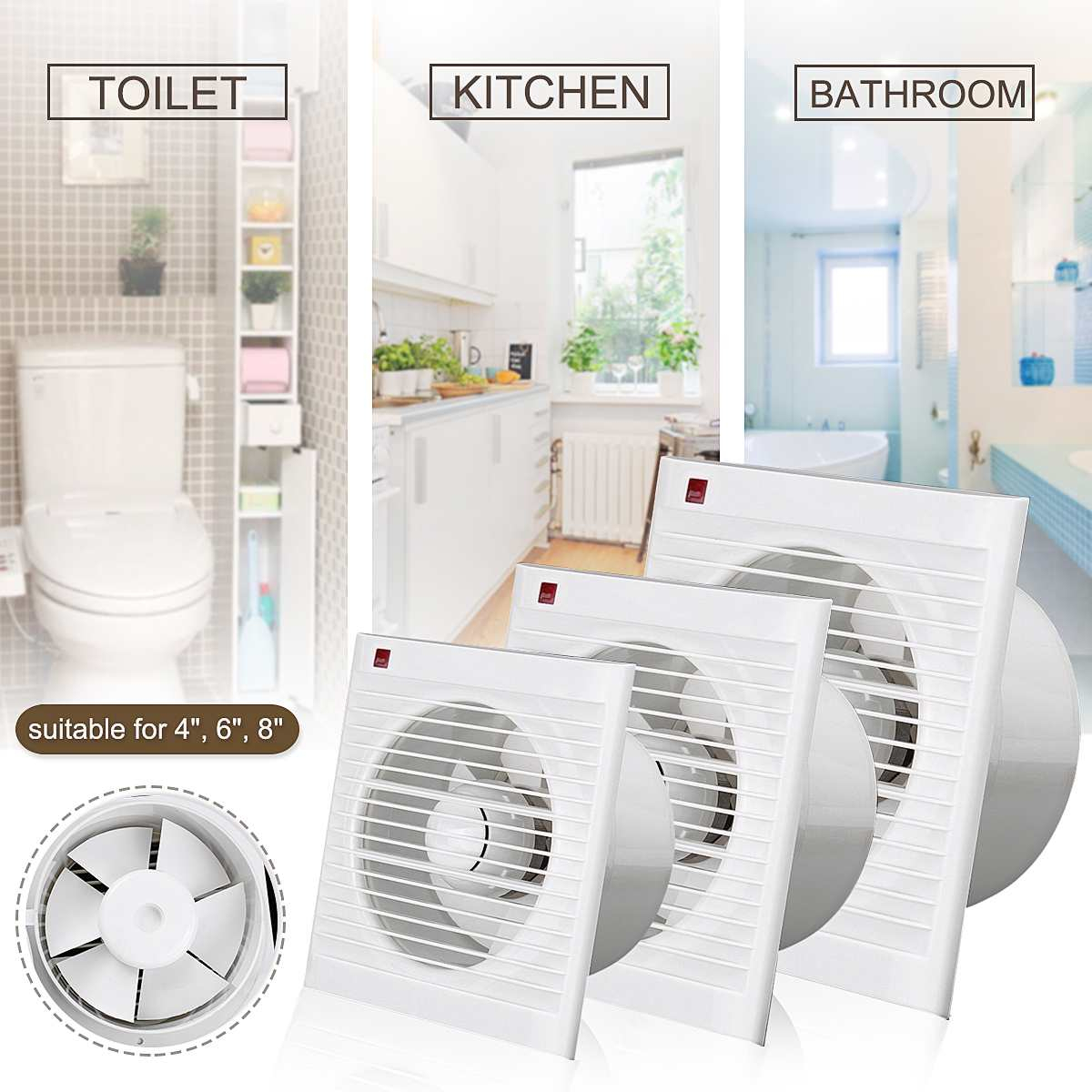Bathroom Vent Fan Sizing Considerations

Bathroom vent fan size – The size of the bathroom vent fan you need depends on a few factors, including the size of your bathroom, the CFM (cubic feet per minute) requirements, and the noise level you’re comfortable with.
Ensuring proper ventilation in your bathroom is crucial, and choosing the right size vent fan is essential. Like an entryway design that welcomes guests into your home, a well-sized vent fan quietly whisks away moisture and odors, creating a refreshing ambiance.
So, when selecting a vent fan, consider your bathroom’s size and the number of fixtures to determine the appropriate airflow capacity.
The CFM requirement for your bathroom is determined by the size of the room. The general rule of thumb is that you need a fan that can move at least 1 CFM for every square foot of bathroom space. So, for a 100-square-foot bathroom, you would need a fan that can move at least 100 CFM.
When selecting a bathroom vent fan, determining the appropriate size is crucial. A suitable fan ensures efficient ventilation, preventing moisture buildup and potential mold growth. For optimal performance, refer to what is a good bathroom exhaust fan to gain insights into fan types, CFM requirements, and noise levels.
By considering the bathroom’s size and layout, you can select a fan that effectively removes excess moisture and maintains a comfortable and healthy indoor environment.
In addition to the CFM requirement, you also need to consider the noise level of the fan. Vent fans can range in noise level from 1 sone to 4 sones. A sone is a unit of loudness, and the higher the sone rating, the louder the fan. For most bathrooms, a fan with a noise level of 2 sones or less is a good choice.
Once you’ve considered all of these factors, you can choose a bathroom vent fan that is the right size for your needs.
Recommended CFM Ratings for Different Bathroom Sizes, Bathroom vent fan size
| Bathroom Size (sq. ft.) | Recommended CFM Rating |
|---|---|
| 50 | 50 |
| 75 | 75 |
| 100 | 100 |
| 125 | 125 |
| 150 | 150 |
Types of Bathroom Vent Fans: Bathroom Vent Fan Size

Choosing the right bathroom vent fan is essential for ensuring proper ventilation and eliminating moisture and odors. There are three main types of bathroom vent fans: ceiling-mounted, wall-mounted, and inline fans.
Ceiling-Mounted Fans
Ceiling-mounted fans are the most common type of bathroom vent fan. They are installed in the ceiling and exhaust air directly through the roof or an exterior wall. Ceiling-mounted fans are relatively easy to install and are available in a variety of sizes and styles to match any bathroom décor.
Advantages:
- Easy to install
- Widely available
- Can be used in any type of bathroom
Disadvantages:
- Can be noisy
- May not be suitable for bathrooms with high ceilings
Wall-Mounted Fans
Wall-mounted fans are installed on the wall, typically above the shower or bathtub. They exhaust air through a duct that is connected to an exterior wall or roof. Wall-mounted fans are more powerful than ceiling-mounted fans and can be used in bathrooms with high ceilings.
Advantages:
- More powerful than ceiling-mounted fans
- Can be used in bathrooms with high ceilings
- Relatively easy to install
Disadvantages:
- More expensive than ceiling-mounted fans
- May require professional installation
- Can be noisy
Inline Fans
Inline fans are installed in the ductwork between the bathroom and the exterior wall or roof. They are the most powerful type of bathroom vent fan and can be used in bathrooms with very high ceilings or large square footage. Inline fans are typically more expensive than ceiling-mounted or wall-mounted fans and require professional installation.
Advantages:
- Most powerful type of bathroom vent fan
- Can be used in bathrooms with very high ceilings or large square footage
- Relatively quiet
Disadvantages:
- Most expensive type of bathroom vent fan
- Requires professional installation
Installation and Maintenance

Proper installation and regular maintenance are essential for ensuring optimal performance and longevity of your bathroom vent fan. Follow these guidelines for a successful installation and effective maintenance.
Installation
- Choose the right location: Place the fan in the ceiling or wall directly above the shower or bathtub, where it can effectively capture and exhaust moisture and odors.
- Determine the appropriate fan size: Calculate the cubic feet per minute (CFM) of airflow required for your bathroom using the formula: CFM = (Room Volume) x (Air Changes per Hour). Aim for 50 CFM per 100 cubic feet of bathroom volume.
- Install the fan: Follow the manufacturer’s instructions for mounting the fan and connecting it to the electrical system. Ensure proper ventilation by providing an unobstructed exhaust path through the roof or exterior wall.
- Seal air leaks: Use caulk or expanding foam to seal any gaps around the fan housing and exhaust duct to prevent air leaks.
Maintenance
- Clean the fan blades: Regularly remove dust and debris from the fan blades using a damp cloth or vacuum cleaner to ensure efficient airflow.
- Check for proper operation: Turn on the fan and listen for any unusual noises or vibrations. If you notice any issues, contact a qualified electrician for inspection and repair.